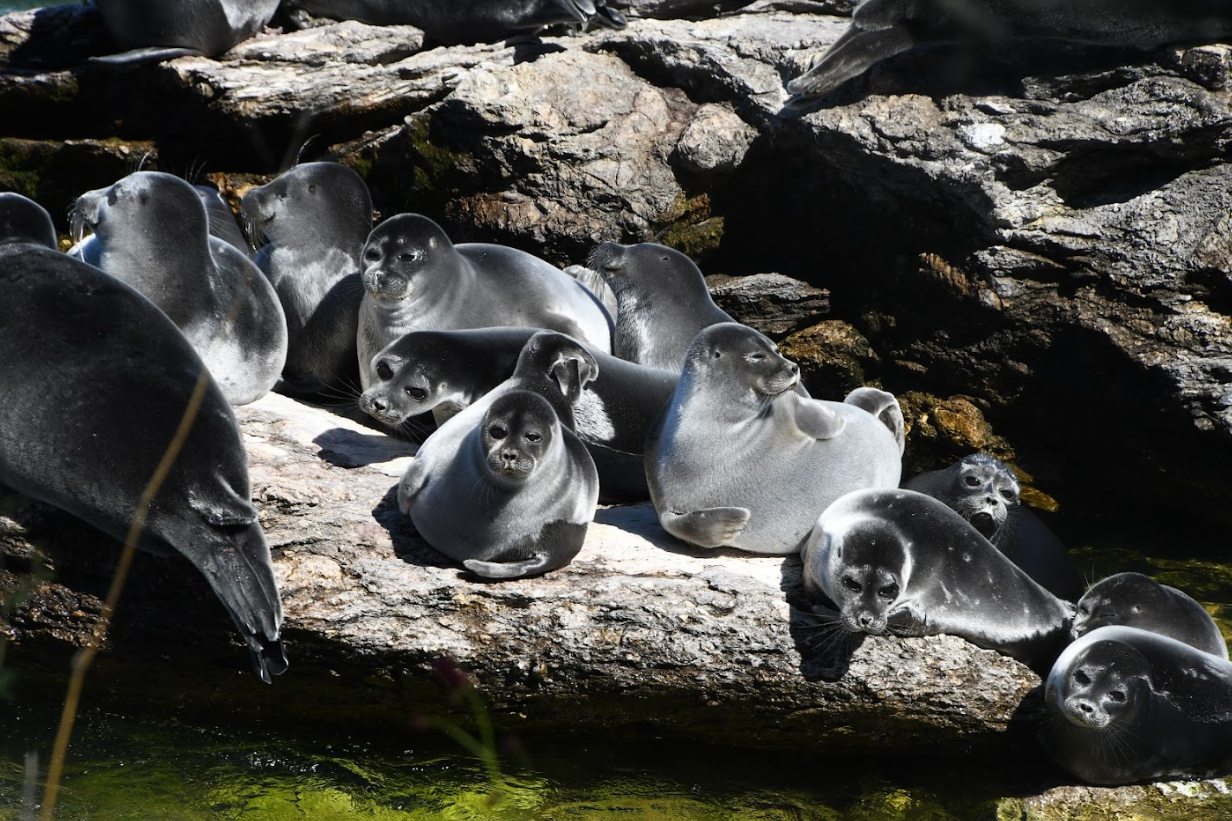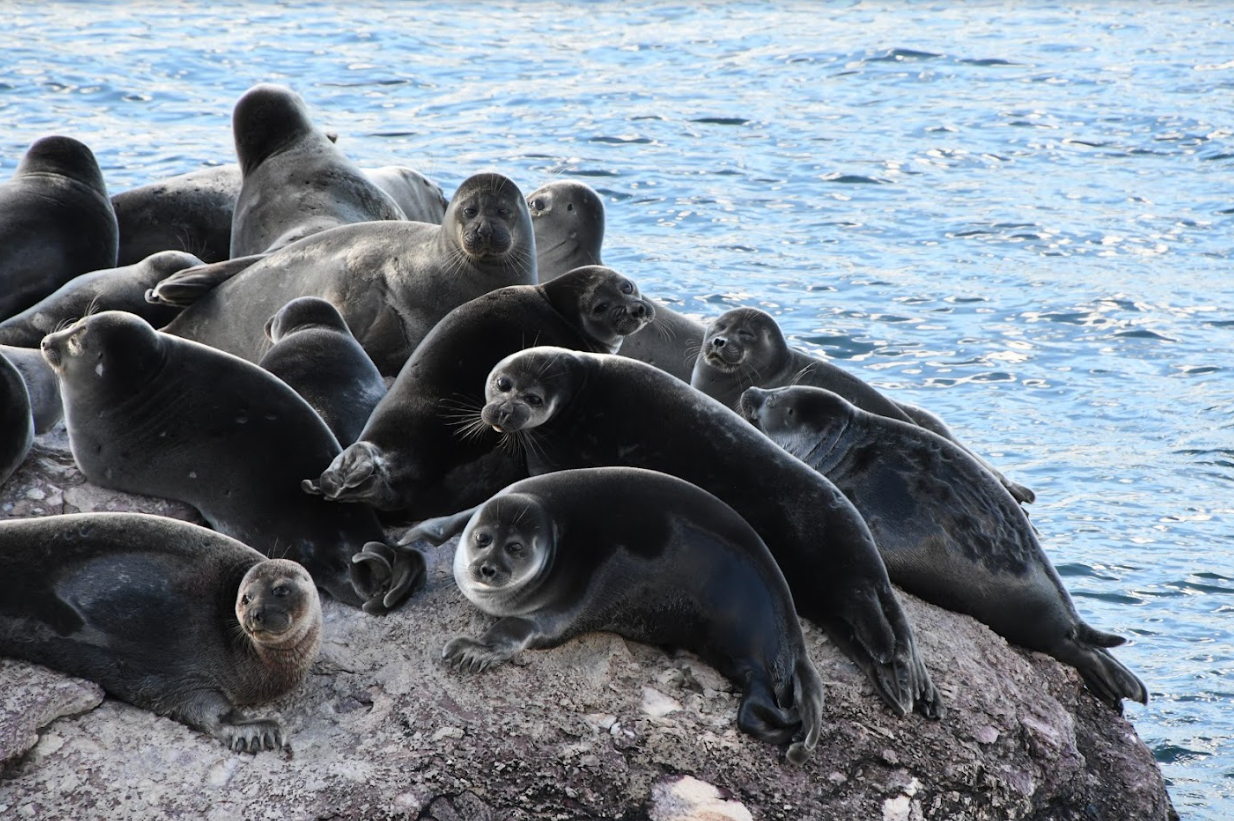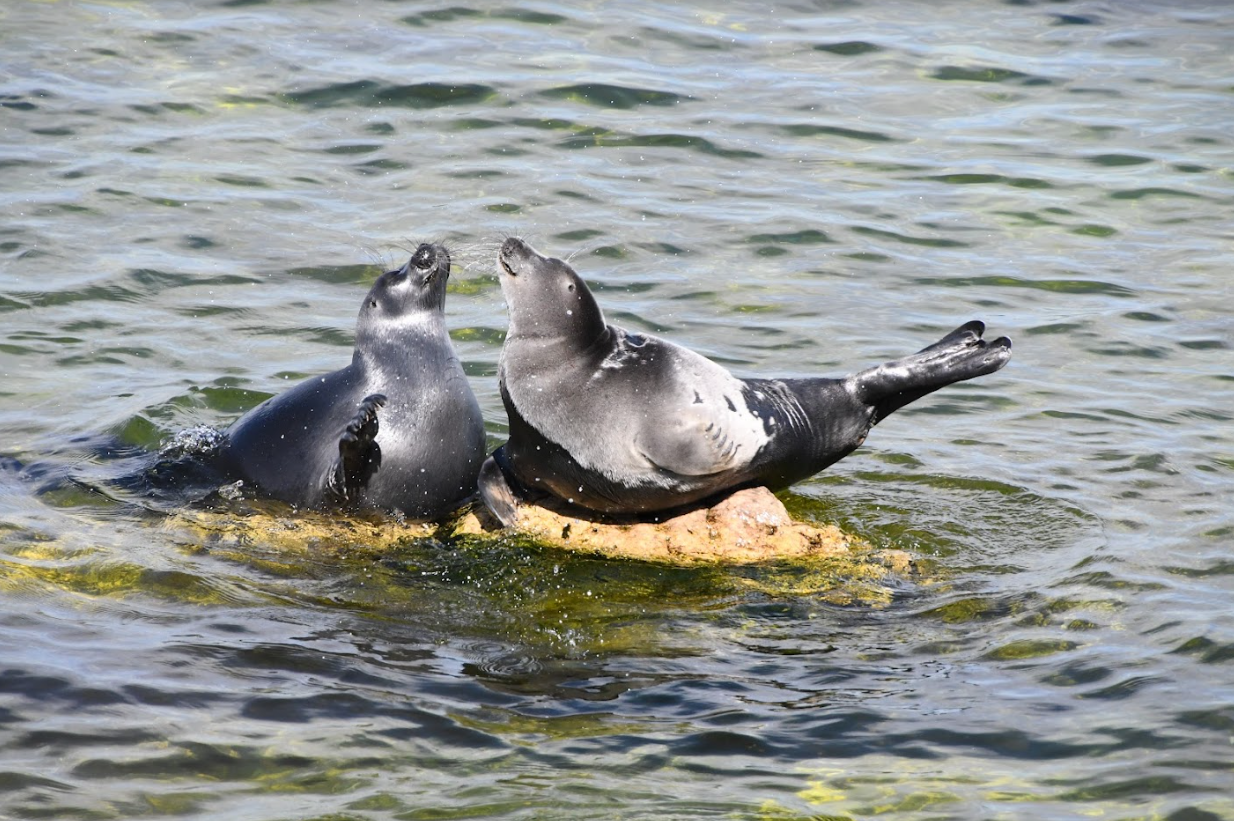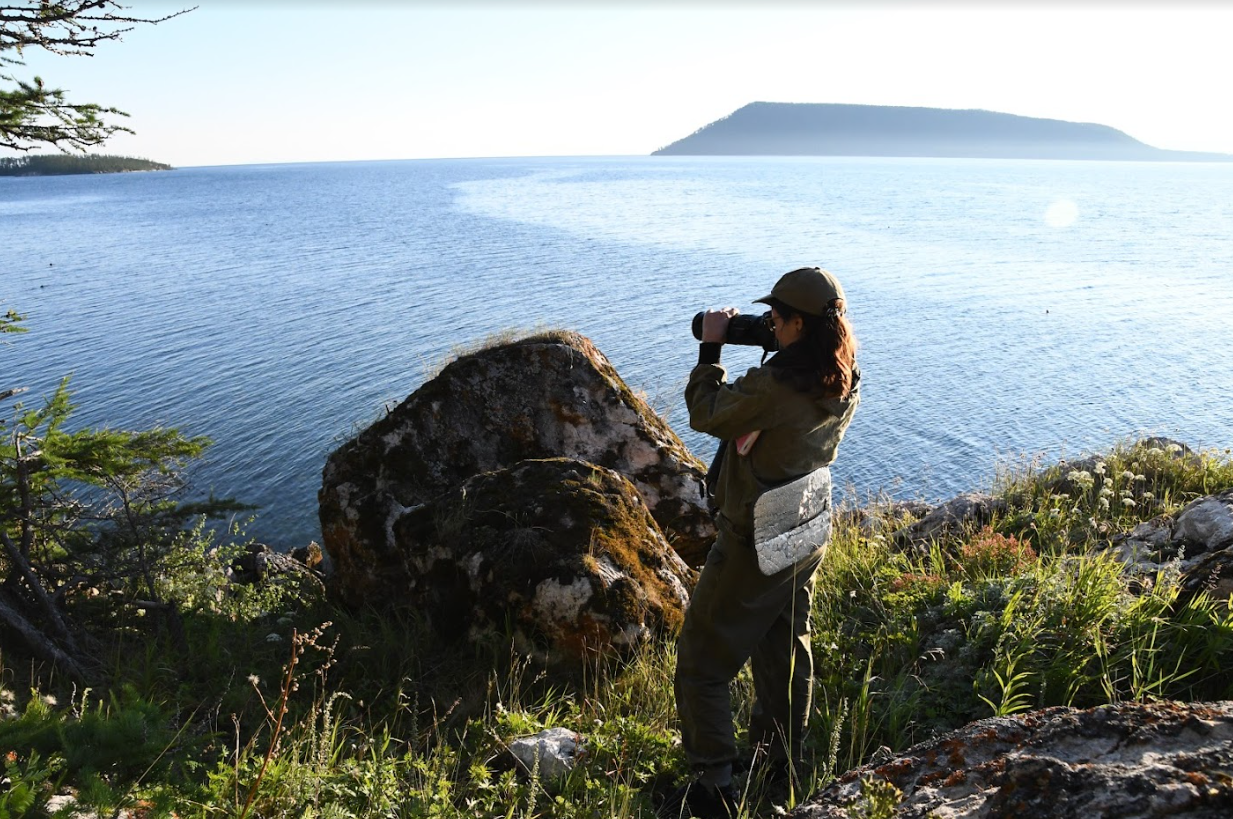
During the period from July 24 to August 18, 2022, employees of the A.N. Severtsov Institute of Ecology and Evolution of the Russian Academy of Sciences (laboratory assistants Gleb Pilipenko, Polina Ilyina and Polina Shibanova), with the support of the Lake Baikal Foundation and the Federal State Budgetary Institution "Zapovednoe Podlemorje", have already been carrying out field work to study the Baikal seal on the Ushkany Islands (Republic of Buryatia). 55 visual and photo counts of the Baikal seal were carried out (48 counts on Tonkiy Island, 3 - on Dolgiy Island, 3 - on Krugly Island). For the first time, a visual survey and photo survey was carried out on the Big Ushkany Island. In addition, camera traps were installed on the northern shores of Dolgiy (2 camera traps) and Krugly (2 camera traps) islands frequented by seals. We received photographic material from camera traps previously installed by employees of the Federal State Budgetary Institution "Zapovednoe Podlemorie" on the northern coast of Tonkiy Island (8 camera traps were installed in total, the camera traps were operating from April 30, 2021 to August 14, 2022). All the data obtained will be used in the future to assess the number, population dynamics and distribution of Baikal seals on the Ushkany Islands. Based on the data obtained, the factors affecting the number of seals in haulouts will be determined. The data from camera traps will make it possible in the future to identify the daily and seasonal dynamics of the number of Baikal seals on the islands, as well as to obtain information on the use of haulouts by seals in other seasons.

In addition, videos of the behavior of seals on the haulout on Tonkiy Island were filmed (157 videos, the total duration of video materials is more than 1600 minutes); information was received from the staff of the reserve on the number of tourists who visited the island daily during the expedition. The data obtained will subsequently be used to assess the impact of tourists on the behavior and number of Baikal seals. Biological material was also collected from 6 individuals of the Baikal seal for further genetic and hormonal studies.


The staff of IEE RAS express their gratitude to the Lake Baikal Foundation and Federal State Budgetary Institution Zapovednoe Podlemorye for assistance in conducting research.

